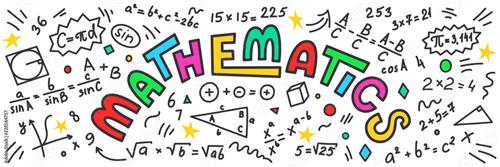-

Curriculum Overview
In Grade 5, instructional time should focus on three areas:
1. developing fluency with addition and subtraction of fractions, and developing understanding of the multiplication of fractions and of division of fractions in limited cases (unit fractions divided by whole numbers and whole numbers divided by unit fractions)
2. extending division to 2-digit divisors, integrating decimals into the place value system and developing understanding of operations with decimals to hundredths, and developing fluency with whole number and decimal operations
3. developing understanding of volume
The specific domains are as follows:
Number and Operations – Fractions and Operations and Algebraic Thinking Domains
● apply their understanding of fractions and fraction models to represent the addition and subtraction of fractions with unlike denominators as equivalent calculations with like denominators
● develop fluency in calculating sums and differences of fractions, and make reasonable estimates of them
● use the meaning of fractions, of multiplication and division, and the relationship between multiplication and division to understand and explain why the procedures for multiplying and dividing fractions make sense. (note: this is limited to the case of dividing unit fractions by whole numbers and whole numbers by unit fractions.)
Operations and Algebraic Thinking and Number and Operations in Base Ten Domains
● develop understanding of why division procedures work based on the meaning of base-ten numerals and properties of operations
● apply understandings of models for decimals, decimal notation, and properties of operations to add and subtract decimals to hundredths
● develop fluency with decimal computations to hundredths, and make reasonable estimates of their results; and
● use the relationship between decimals and fractions, as well as the relationship between finite decimals and whole numbers (i.e., a finite decimal multiplied by an appropriate power of 10 is a whole number), to understand and explain why the procedures for multiplying and dividing finite decimals make sense.
Measurement and Data and Geometry Domains
● recognize volume as an attribute of three-dimensional space
● understand that volume can be measured by finding the total number of same-size units of volume required to fill the space without gaps or overlaps
● understand that a 1-unit by 1-unit by 1-unit cube is the standard unit for measuring volume
● select appropriate units, strategies, and tools for solving problems that involve estimating and measuring volume
● decompose three-dimensional shapes and find volumes of right rectangular prisms by viewing them as decomposed into layers of arrays of cubes
● measure necessary attributes of shapes in order to determine volumes to solve real world and mathematical problems.
Units of Study
Understanding Place Value
Use Models and Strategies to Add and Subtract Decimals
Fluently Multiply Multi-Digit Whole Numbers
Use Models and Strategies to Multiply Decimals
Use Models and Strategies to Divide Whole Numbers
Use Models and Strategies to Divide Decimals
Use Equivalent Fractions to Add and Subtract Fractions
Apply Application of Multiplication to Multiply Fractions
Apply Understanding of Division to Divide Fractions
Represent and Interpret Data
Understand Volume Concepts
Convert Measurements
Write and Interpret Numerical Expressions
Graph Points on the Coordinate Plane
Analyze Patterns and Relationships
Geometric Measurement: Classify 2-Dimensional Objects

